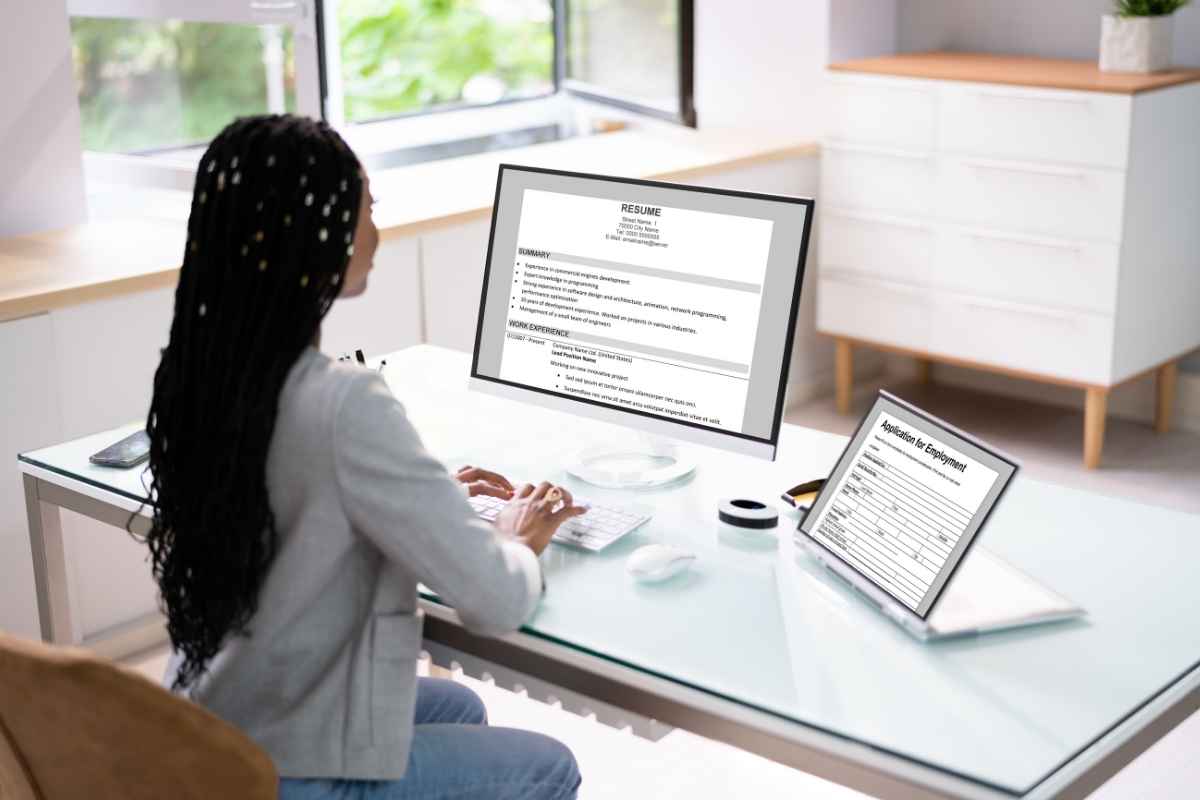
Understanding the Difference Between Cover Letter and Resume
August 30, 2025
Top Action Verbs for Resume Success: Boost Your Job Application Today
September 27, 2025How to Mail Resume to HR: Effective Email Templates and Tips
Introduction to Emailing Resumes
Emailing your resume is a standard way to apply for jobs today. You may be asking yourself how to mail your resume to HR without making mistakes, and that’s exactly what this guide will cover. As a fresh graduate or first-time job seeker, you might feel nervous, but a clear and professional email can make a strong first impression. Using an informative subject line and clear subject lines increases the likelihood that your email will be noticed by hiring managers. For instance, start with a professional email address (for example, first.last@example.com) and a concise email subject line. An effective subject line helps your email stand out and sets the tone for your message. A subject like YourName – [Job Title] Application tells the hiring manager immediately who you are and the role you want.
- Emailing a resume is a common part of applying for jobs.
- Use a professional-sounding email address (e.g. firstname.lastname@gmail.com) to make a good impression.
- Write a specific subject line that includes the exact job title position and your name, and if possible, the title position at the company, so the reader knows who you are and what the email is about.
- Keep the email concise, clear, and specific to the job. A brief, well-structured email shows professionalism.
For example, an informative subject line such as “Application for Marketing Manager – Sam Jose” or “Sam Jose – Marketing Manager Position at Assign Corp” is a best practice, as it clearly states the application for the job title or the job title position.
A well-written email subject line and email body are crucial for making a positive impression on hiring managers.
This introduction sets the stage for a well-crafted application email. Each detail (from address to subject to brevity) helps positively grab the recruiter’s attention.
Preparing to Email a Resume
Before sending your email, do some preparation. Research the company and the hiring manager. Try to find the name of the person who will read your email (LinkedIn and the company website can help). Addressing someone by name (e.g. “Dear Ms. Patel,”) shows you made the effort; if you really can’t find a name, “Dear Hiring Team” or “Dear Hiring Manager” is better than nothing.
Next, review the job description carefully. Note the key skills and qualifications the posting mentions, and think about which of your experiences match them. This will help you highlight the most relevant points when you write your email.
Finally, prepare a professional signature for your email. Under your closing (like “Best regards,”), add your full name, phone number, and a link to your LinkedIn profile or portfolio (if you have one). In your professional signature, consider including your desired position and a brief mention of your professional background to give the recruiter context about your experience and clarify the role you are pursuing. A professional signature gives the recruiter easy contact information and shows attention to detail.
Further reading:
Understanding the Power of Resume Keywords for Freshers
Best Extracurricular Activities in Resume to Boost Your Job Prospects
Resume Checklist for Freshers: Things to Check Before Submitting Your Resume
The Ultimate Guide to Adding Certifications in Resume for Freshers
Top Resume Summary Examples for Freshers: Your Practical Guide to Standing Out!
Writing a Clear Subject Line
The subject line is your email’s headline, so make it count. It should be brief but specific. Include the job title, company name, and any job ID or job reference number, if applicable. Also, put your name, so it’s clear who the email is from. For example:
Subject: Application for Marketing Manager – Oliver Smith (Job ID: 12345, Ref: MM-2024)
Subject: Application for Marketing Assistant – Sonam Dixit (Company Name: Bestfort Corp)
Subject: Software Engineer Application – Alex Johnson (Ref: SE-2025).
Including the company name and the job title in the subject line makes it more informative and specific. A specific subject line and an informative subject line should include details like the job title, job ID, job reference number, and company name.
Be precise: Use the exact job title (and number, if given) from the job posting.
Avoid generic phrases: Don’t use vague subjects like “Job Application” or “Resume.”
Stand out with clarity: Something like Graphic Designer – Emily Carter immediately tells HR why your email matters.
Follow good examples: Indeed provides subject formats such as Resume–Job Title–Your Name, which clearly match the resume to the position.
A clear subject line helps ensure your email gets opened and doesn’t end up overlooked. It signals professionalism and helps your email pass any simple screening tools.
Email Template and Structure
Your email should use a clean, formal format. A typical structure is:
Sample Email 1:
Subject: Tanvi Naresh – Data Analyst Job Title Position Application
Dear [Hiring Manager’s Name],
I am Jane Doe, a recent graduate in Data Science from XYZ University. I am writing to apply for the Data Analyst job position at Tech Solutions Inc., which I saw on your careers page. As a candidate with a strong academic background and relevant internships in data analytics, I believe I am well-suited for the title position at company. My coursework and internship experience have provided me with relevant accomplishments, such as leading a data visualization project and developing Python scripts for data analysis, which directly align with the requirements of this role. This short but effective introduction is designed to quickly capture your attention and demonstrate my fit for the job.
Resume attached for your review. Thank you for considering my application. I would welcome the opportunity to discuss how I could contribute to your team. Please let me know if you need any additional information.
Best regards,
Tanvi Naresh
(555) 123-4567
This template introduces who you are and why you’re writing, then highlights relevant skills, relevant accomplishments, and relevant internships. It’s a good model of a concise, professional resume email. The first paragraph provides a short but effective introduction, stating your name, degree, and the job title you want. The email’s body should be concise and focused, briefly explaining why you fit the role. It ends with thanks, a mention that your resume is attached, and a polite sign-off.
Use this structure as a guide: a formal greeting (such as “Dear [Hiring Manager’s Name]”), a brief opening about yourself and the job position, a short email body mentioning key qualifications, and a courteous closing. When sending your resume or sending a resume to potential employers, always personalise the greeting and content. Sending a resume via email is a standard practice—be sure to attach your resume and reference it in the message. Being clear about who you are and why you’re a fit is the main goal.
Attachments and File Format
When it comes to attachments, keep things simple and standard. Attach your resume (and cover letter if requested) in a common format: PDF or Word (.docx). PDF format is the universally accepted file format for resume files and ensures the correct format is preserved across all devices. Word is also acceptable (some systems prefer it). Name your files clearly, like Mohinder_Resume.pdf and Mohinder_CoverLetter.pdf, so they’re easy to identify.
Attach both your resume and cover letter (if required). If you’re unsure, it’s safe to include a cover letter as a separate file.
Use a clear, professional file name (your name and document type).
Keep each attachment small enough to open quickly (usually under 10 MB).
Follow any instructions exactly (for example, if the job ad says “PDF only” or a specific naming format, do it).
Before sending, double-check that all the attachments are included and that each resume file and document opens correctly and maintains the correct format.
Attaching your documents properly in the right format shows that you’re organised and understand professional norms. It also helps ensure the hiring manager can open and review your resume easily.
Email Content and Tips
Now focus on the body of the email. A well-written email body is essential—it should clearly demonstrate that you are genuinely interested in the exciting opportunity. Keep your tone professional and positive. Use complete sentences and correct grammar. Try to connect your experience to the job:
Highlight relevant skills, accomplishments, and internships: Mention one or two qualifications, relevant accomplishments, or relevant internships that match the job’s requirements. For example, “My internship in marketing and my coursework in data analysis prepared me well for this Sales Analyst role.”
Show enthusiasm politely: Let them see your excitement, but don’t overdo it. You might say, “I would love the opportunity to contribute my skills in data analysis to your team.”
Include a call-to-action: Politely invite next steps. For example: “I would welcome the chance to discuss how I can contribute; please let me know if you need any additional information.”
Mention attachments: Add a line about your attachments so the reader notices them. For example: “I have attached my resume for your consideration,” as Indeed advises. This helps point out where to find your resume.
Keep paragraphs short: Three or four short paragraphs (each a few sentences) are best. A shorter email is more likely to be read in full.
Proofread the email’s body: Always check for grammar errors, typos, or mistakes. A clean, error-free email demonstrates your attention to detail.
Overall, be genuine. The email is your first impression, so let your confidence and professionalism shine without seeming arrogant. Referencing your professional network can also add credibility to your application.
Hiring Managers and Email Etiquette
Politeness and respect go a long way. Address the hiring manager properly if you know their name, and use a professional tone throughout.
Address by name if possible: “Dear Ms. Gupta,” is better than “To whom it may concern.” If you found the hiring manager’s name, use it. If not, “Dear Hiring Manager,” or “Dear [Company] Recruiting,” is acceptable. If you cannot find the hiring manager’s name, addressing the HR manager is also appropriate.
Use a polite sign-off: End with “Sincerely,” or “Best regards,” followed by your name. You can also include your contact information in a simple signature (name, phone, email) below your name.
Maintain professional language: Avoid slang or overly casual phrases. Write as if speaking politely in person.
Be patient: After sending, give HR some time to respond. If you don’t hear back in about a week, sending one polite follow-up email is fine (see next section).
Using a courteous tone and the right formality shows respect for the hiring manager’s time and positions you as a mature candidate.
Follow-up Email
If you haven’t heard back after about a week or two, sending a brief follow-up is appropriate. It shows you’re organised and still interested, without being pushy.
Be polite and concise: Thank them again for considering your application and gently ask if there’s any update.
Remind them of the position: Mention the job title, the date you applied, and reference the job listing or job board where you found the position.
Reiterate interest: You can say you remain excited about the opportunity and express your enthusiasm for landing your dream job.
Show awareness: Briefly mention your knowledge of current industry trends to demonstrate you are up-to-date and engaged.
Sample Follow-Up Email:Subject: Follow-Up on Marketing Coordinator Application – Alex Johnson
Dear Ms. Reena,
I recently applied for the Marketing Coordinator position at BrightTech on July 10th, after seeing the job listing on your company’s careers page. I wanted to check in to see if you had a chance to review my resume. I am still very enthusiastic about the possibility of joining your team and using my social media marketing experience to contribute. I am especially excited about the opportunity to land my dream job at BrightTech. I also stay current with industry trends and am eager to bring that knowledge to your organization. Please let me know if there is any additional information I can provide.
Thank you for your time, and I look forward to hearing from you.
Sincerely, Swathi Malik (555) 987-6543
This follow-up example is short and polite. It serves as a gentle reminder without demanding an immediate answer.
Job Application Submission
When you finally click “send,” make sure you’ve followed all instructions in the job posting. Double-check:
You’re emailing the correct address (for example, jobs@example.com or hr@company.com).
You have a clear subject line as specified (include any required job code or reference).
All required attachments (resume, cover letter, portfolio, etc.) are included.
If the posting asked you to answer any specific questions or fill out forms in the email, be sure you’ve done that.
You used the same email address and signature throughout the process (for consistency).
You have followed the employer’s directions closely for submitting your job application, including any specific formatting or instructions mentioned in the job posting.
Following directions exactly shows you’re detail-oriented and professional. Even a small mistake here (like missing an attachment or sending to the wrong email) can hold you back.
Email Tips and Optimisation
Think of your email from both the recruiter’s and the system’s perspective. Many companies use software to scan incoming applications, so using clear keywords helps.
Use keywords from the job description: Mirror the language of the posting. If they want a “Project Manager with leadership experience,” mention “Project Manager” and related skills in your subject and email.
Craft a strong subject: Make it match the job. Indeed’s examples (like Resume–Job Title–Your Name) ensure your subject line passes simple filters.
Tailor each message: Don’t copy and paste the same generic email everywhere. Mention something specific about the company or role to show you’re truly interested.
Preview your email: Sending a test email to yourself is a very effective strategy. Send a test email to check formatting and ensure all the attachments are included. This helps catch any weird spacing, missing parts, or errors before the final submission.
Customising each email and using clear language helps your application stand out in both human and automated reviews.
Common Mistakes to Avoid
Learn from others by avoiding these errors:
Generic emails: Don’t send a form email without personalisation. Hiring managers can tell when you didn’t customise.
Unprofessional email address: No “party123@example.com” or “cuteguy@example.com.” Stick to a variation of your name.
Typos and errors: Spelling or grammar errors, especially in names or titles, look careless. Always proofread your resume email for grammar errors before sending.
Missing attachments: Make sure your resume (and cover letter, if required) is actually attached. A quick double-check will save you from sending an empty message.
Avoiding these mistakes keeps the focus on your qualifications, not your oversights.
Effective Emailing Strategies
Think of each email as a chance to be clear, professional, and personal. Always include your name and the job title in the subject line, maintain a courteous tone, and customise your message for the role.
Key Takeaways for Job Seekers:
Use a clear subject line with your name and the job title.
Keep your email professional and concise.
Personalise your message for each application.
Double-check attachments and contact details before sending.
Follow up politely if you don’t hear back.
These practices sum up the key tips we’ve discussed.
Professional Email Address
Your email address itself makes a first impression. Keep it simple and professional:
Use your real first and last name in the address (for example, alex.smith@example.com).
Avoid nicknames, numbers, or anything too casual (like hobbies or pet names).
If your name is common and already taken, you can add a middle initial or a simple number (for instance, john.s.smith@example.com or john.smith92@example.com).
Use the same professional email throughout your job search so everything stays consistent.
Having a clean, professional email address shows you’re taking the process seriously and adds credibility from the start.
Final Review
Before hitting send, take one last look. Read your email out loud to catch any typos or awkward phrasing. Check that all attachments open correctly and that your formatting looks neat. Make sure names, dates, and contact details are accurate. Doing this final review ensures your application is polished and professional.
You’ve crafted a thoughtful, well-structured email that presents your qualifications clearly. With these tips in mind, you can send your resume to HR confidently and make a positive impression.
Good luck !!!




